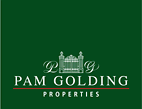Motoring memories as car museum
2007-06-28
EVERY Monday eighty thoroughbreds are led out of their stables at L’Ormarins in Groot Drakenstein, before returning to have their coats groomed before the next day’s visitors to Johann Rupert’s unique motor museum.
For six days of the week automobile lovers flock to the Franschhoek Motor Museum, where the evolution of the car over the past century is portrayed in four stately buildings.
The halls, with a total floor area of 2 700sq metres, are de-humidified, and the exhibits presented in chronological order.
You smell the leather and the polish, and in your imagination you hear the labour of the first engines as well as the roar of the V8 engines under the bonnets of the shiny colours, from black to pastel, from racing green to red.
A Penny Farthing has a place of honour, with memorabilia and motor cycles from bygone years parked amid their four-wheeled (and in the older specimens, white-walled tyre) counterparts.
The museum’s collection exceeds 220 vehicles, including the fastest and the slowest cars, ranging from a 1898 Beeston motor tricycle to a 2003 Ferrari Enzo supercar.
The Franschhoek Motor Museum stems from a project initiated by Dr Anton Rupert, who, in 1974, established a transport museum in the renovated Heidelberg railway station.
In 2004 it was decided to relocate the entire collection to L’Ormarins, together with vehicles acquired individually and from other collections.
First you step up to a 1903 Ford Model A, the very first car to be imported to South Africa and which landed in the port of Cape Town in 1904.
Next you encounter a 1909 Le Zébre by the designer of the later Citroën. On its description you will read that it is “slightly faster than a man running”.
Third in the line-up is a 1910 Wolseley 12/16 town car, a real Addams Family relic, with the driver open to the elements and the passengers snugly in the cab.
In the same hall stands the very 1925 Chevrolet superior tourer which had transported John Rupert, a lawyer in Graaff Reinet, and his family. It was later repurchased by Dr Anton Rupert.
A 1922 Ford, the year that Ford sold more than one million cars for the first time, is as black as its maker prescribed.
“You can get any colour, as long as it’s black,” was Henry Ford’s well-known comment.
Among the historic icons is a Buick and a 1928 Rolls Royce Phantom, a 1930 De Soto Series K roadster, a Bugatti, a 1934 V8 Phaeton de Luxe tourer with a top speed opf 137km/h, allegedly the “prettiest Ford ever made”.
A 1921 Sunbeam motor cycle, with 2.75 HP side valve air-cooled four-stroke engine and three-speed transmission (complete with weathered leather saddle) can still putt-putt its way around the estate.
Then you walk up to the 1935 Mercedes Benz 130 H two-door sedan with its rear engine, the first Mercedes with a central tubular frame.
Parked at the door of the second hall is a 1936 Studebaker Dictator, a Cord 810 convertible.
The 1938 Chevrolet Master de Luxe cabriolet had been given a face-lift by its maker, and sported horisontal grille bars.
A two-speed rear axle was offered as optional equipment in South Africa, for its owner to select a faster final drive ratio for a higher cruising speed and better fuel economy. For mountainous terrain the slower ratio was selected.
A 1938 DKW Reichsklasse F5 cabriolet (2+2) is endowed with a wooden body, which, it was recorded, did not last long as the steel cabriolets did on the bad South African roads.
A baby-blue 1947 De Soto suburban was perhaps the first example of the mini-bus taxi in South Africa.
With seating for nine on three rows, and ample space for luggage on roof-mounted grids, it conveyed tourists to the Kruger national park.
Also powder blue is a 1950 Chevrolet Styleline de Luxe, with next to it a pastel-green 1952 Beetle, said to have been the “most successful car in the world”.
The third hall follows on in the fifties, with a front-wheel drive 1954 Citroën 11CV “Traction Avant”, built at a time when the vast majority of cars were driven by rear wheels. It had torsion springing, much like the cigar boxes of that time.
The 1955 Chevrolet 1955 Bel Air convertible with “small block” V8 engine, designed by Ed Cole, has what has been described as the “most successful car engine ever built”.
Drawing much attention is the 1957 Messerschmitt KR200 Kabinenroller. The powder-blue, three-wheeled little car was designed by Fritz Feud, an aeronautical engineer, who built hand-operated cars for invalids in Bavaria.
He teamed up with his friend Willy Messerschmitt, who had been building German fighter planes, and together they manufactured these cabin scooters at Regensburg.
A fire-engine red 1959 Cadillac Series 62 convertible has the most flamboyant body design and the highest fins to date on a motor vehicle.
Following the only all-South African Protea and Dart/Flamingo, is the long, long nosed 1964 Studebaker Avant and then the wild Shelby 1965 Ford Mustang, with its 210km/h top speed.
A racing green 1970 Cadillac sedan de Ville with a radio antenna fitted in its windscreen, takes you to the red 1981 MGB GT and out of the door to the fourth and last hall of famous cars.
To fitting background music, you read the inscription next to the 1932 MG J2: “So distinctive as to be almost worshipped.
The 1936 Auburn supercharged eight, roared from the factory in America with a Straight 8, 4589.2cc super-charged, producing 150 BHP (110,4Kw) and had a three-speed gearbox plus two-speed rear axle and Lockheed drum brakes.
One of the cars built in 1948/49 by local enthusiasts and raced by John Tout, was a French racing blue Peugeot racing special, with among other odds and ends, a supercharger from a Mosquito plane.
A 1956 Aston Martin DB2/4 and a DB4 GT are in pristine condition, as are the Jaquars and the 1952 Austin Healey.
Holding its own among the sports cars, is a green 1964 Mini Cooper 1000, with white stripes running across the bonnet and a white roof.
When the Car of the Century was named in 1999, the Mini Cooper occupied the second spot after the Model T Ford.
Ian Scheckter’s red, white and blue Lexington March F 11978 78B, with which the racing driver had won the South African Formula Atlantic championship, is parked complete with Avon racing slicks, in the luxury pits on L’Ormarins.
And then you find yourself in the company of the red racers, not one, not two, but three Ferrari’s – the F40, the F50 of which only 349 were ever manufactured, and the faster than fast Enzo that does 0–100 in 3,7 seconds and reaches a top speed of 348,2km/h.
That might be the fastest horse in the stable, but (as a guide whispered in my ear) Mr Rupert favours the black Honda NSX Coupé parked to the Italians’ left.
The Honda (with the number plate CL 33017 should you ever encounter the heir to the Rupert throne on the road) was the first Japanese Formula One Grand Prix racing car.
“And do you know why he favours the Honda?” the guide continued. “Because you climb from the Honda, while from the Ferrari, you can only fall out of the door.”
That is precisely why, Mr Rupert, I chose the sexiest car in your collection for my garage, the silver Mercedes Benz CLK DTM AMG of which only 100 were made – by hand.
It sports a supercharged 5,5 litre V8 engine and is one of the most successful touring/racing cars ever made.
Of course, I will also be able to step into my car even when I am 92 - and speed limits have long since been scrapped.
Entrance to the museum, from Tuesday to Sunday, R60. Enquiries at 021-874-9000.
More
News
|


